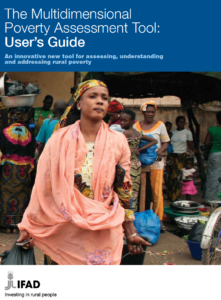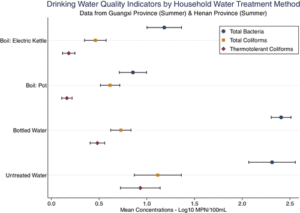Subsewershed SARS-CoV-2 Wastewater Surveillance & COVID-19 Epidemiology Using Building-specific Occupancy & Case Data
Abstract/Summary: To evaluate the use of wastewater-based surveillance and epidemiology to monitor and predict SARS-CoV-2 virus trends, over the 2020–2021 academic year we collected wastewater samples twice weekly from 17 manholes across Virginia Tech’s main campus. We used data from external door swipe card readers and student isolation/quarantine status to estimate building-specific occupancy and COVID-19 case counts at a daily resolution. After analyzing 673 wastewater samples using reverse transcription quantitative polymerase chain reaction (RT-qPCR), we reanalyzed 329 samples from isolation and nonisolation dormitories and the campus sewage outflow using reverse transcription digital droplet polymerase chain reaction (RT-ddPCR). Population-adjusted viral copy means from isolation dormitory wastewater were 48% and 66% higher than unadjusted viral copy means for N and E genes (1846/100 mL to 2733/100 mL/100 people and 2312/100 mL to 3828/100 mL/100 people, respectively; n = 46). Prespecified analyses with random-effects Poisson regression and dormitory/cluster-robust standard errors showed that the detection of N and E genes were associated with increases of 85% and 99% in the likelihood of COVID-19 cases 8 days later (incident–rate ratio (IRR) = 1.845, p = 0.013 and IRR = 1.994, p = 0.007, respectively; n = 215), and one-log increases in swipe card normalized viral copies (copies/100 mL/100 people) for N and E were associated with increases of 21% and 27% in the likelihood of observing COVID-19 cases 8 days following sample collection (IRR = 1.206, p < 0.001, n = 211 for N; IRR = 1.265, p < 0.001, n = 211 for E). One-log increases in swipe normalized copies were also associated with 40% and 43% increases in the likelihood of observing COVID-19 cases 5 days after sample collection (IRR = 1.403, p = 0.002, n = 212 for N; IRR = 1.426, p < 0.001, n = 212 for E). Our findings highlight the use of building-specific occupancy data and add to the evidence for the potential of wastewater-based epidemiology to predict COVID-19 trends at subsewershed scales.

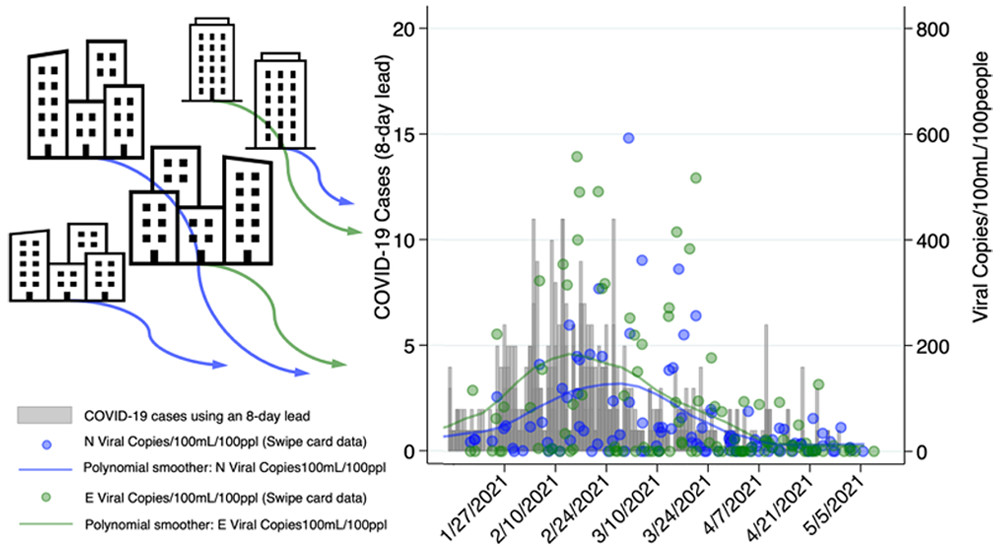
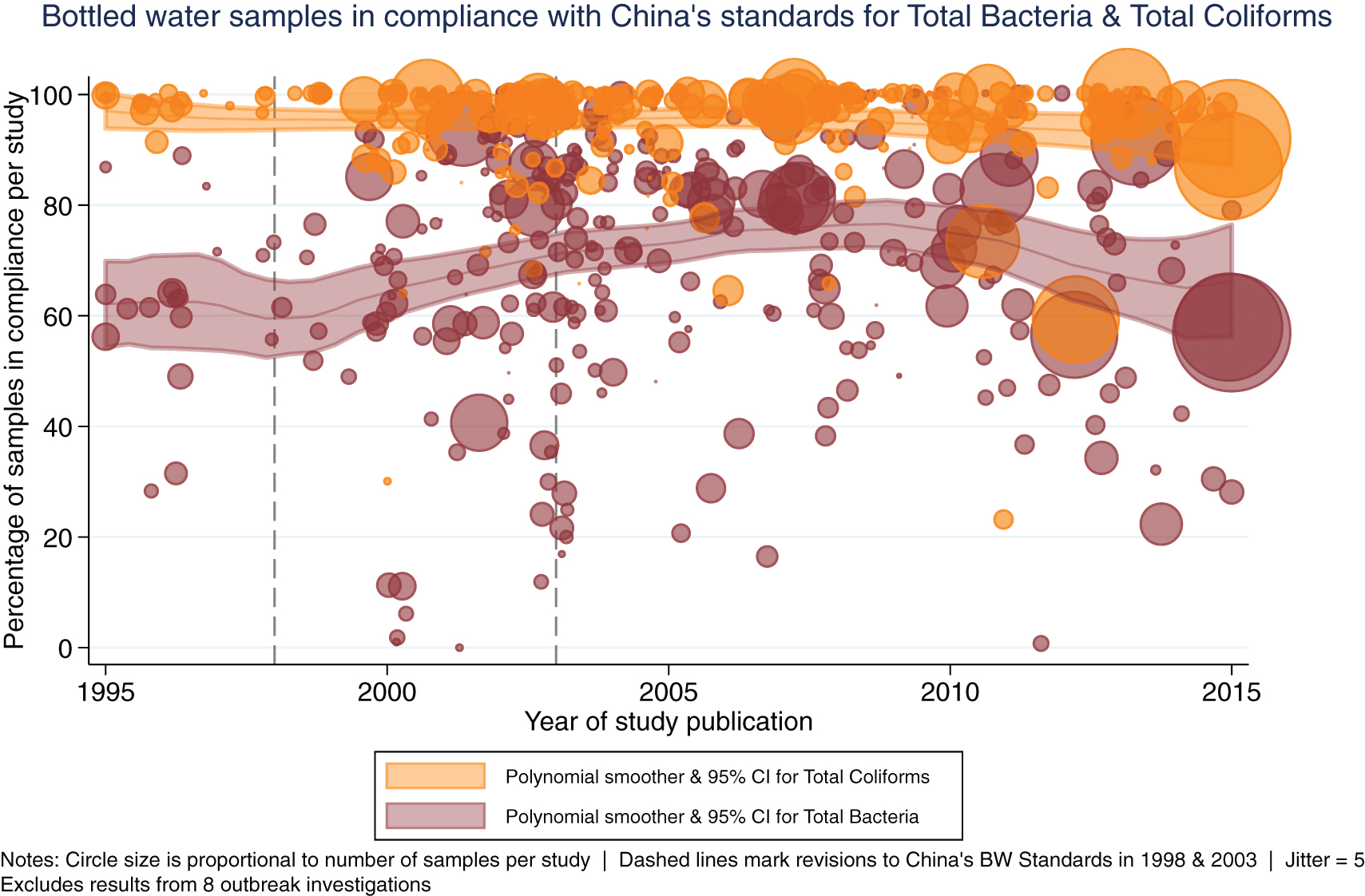
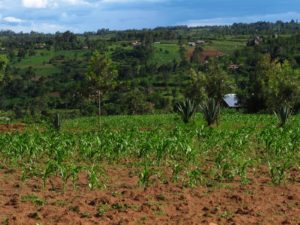
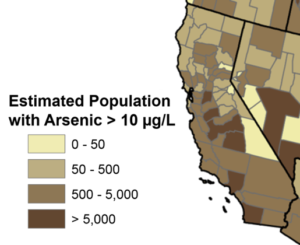
 Abstract/Summary: In the 1950s, shortly after the founding of the People’s Republic of China (PRC), the central government created the Patriotic Health Campaign (PHC) in order to standardize and disseminate health focused educational materials intended to control and prevent infectious diseases (1). “Water improvement”, meaning measures aimed at providing safe drinking water for households in China, was an important part of the PHC. After 60 years of water improvement policies, programs, and investments, the rural water supply sanitation and hygiene in China has improved dramatically, and water-related diseases no longer negatively impact the rural population as they once did. In addition to improvements related to the quantity and quality of the rural water supply, water improvement programs also promoted improved hygiene, sanitation, and other health-related behaviors among rural households. Together, such initiatives have improved the quality of life and the health of hundreds of millions of rural residents, while also contributing to economic and social advancement across rural China (2). The purpose of this article is to describe how the PHC served as a foundation for the expansion and improvement of drinking water supply in rural China, and to summarize the key programs, projects, and initiatives that followed over the last 60 years.
Abstract/Summary: In the 1950s, shortly after the founding of the People’s Republic of China (PRC), the central government created the Patriotic Health Campaign (PHC) in order to standardize and disseminate health focused educational materials intended to control and prevent infectious diseases (1). “Water improvement”, meaning measures aimed at providing safe drinking water for households in China, was an important part of the PHC. After 60 years of water improvement policies, programs, and investments, the rural water supply sanitation and hygiene in China has improved dramatically, and water-related diseases no longer negatively impact the rural population as they once did. In addition to improvements related to the quantity and quality of the rural water supply, water improvement programs also promoted improved hygiene, sanitation, and other health-related behaviors among rural households. Together, such initiatives have improved the quality of life and the health of hundreds of millions of rural residents, while also contributing to economic and social advancement across rural China (2). The purpose of this article is to describe how the PHC served as a foundation for the expansion and improvement of drinking water supply in rural China, and to summarize the key programs, projects, and initiatives that followed over the last 60 years.